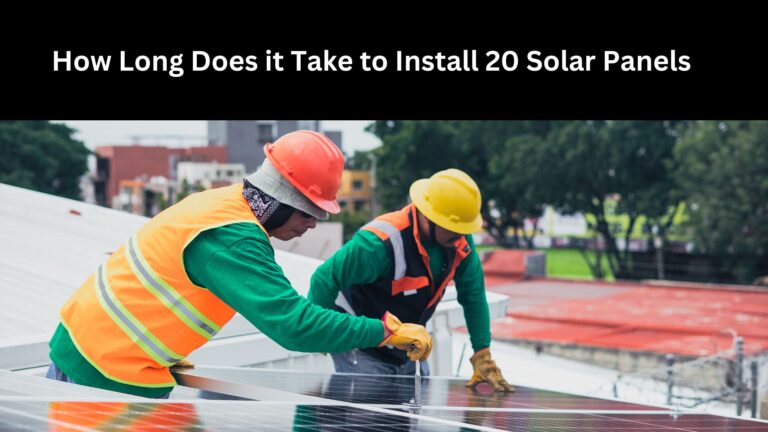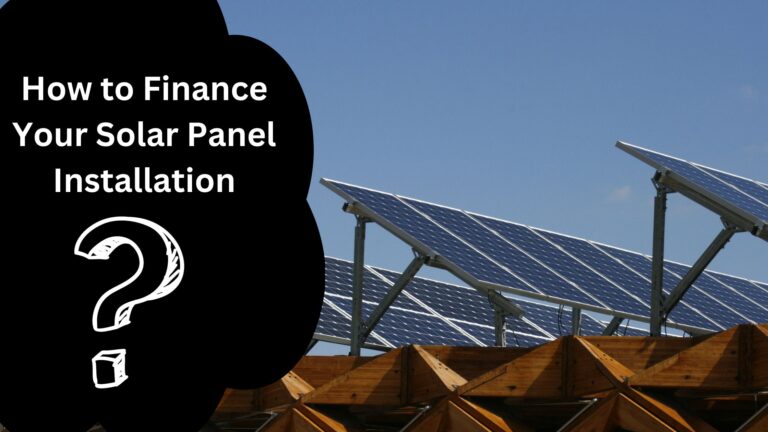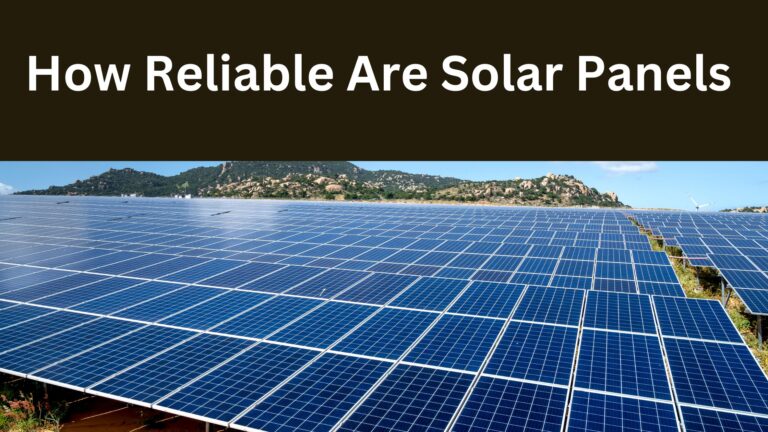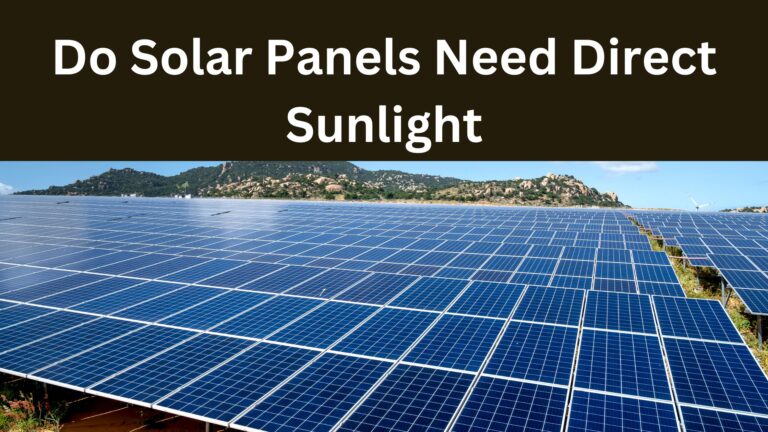Going Solar: How to Determine the Number of Solar Panels You Need for Your Home
Introduction
With the rising cost of energy bills and increasing concern over environmental issues, solar panels have emerged as a popular and effective solution to meet our energy needs while reducing our carbon footprint. However, the decision to install solar panels comes with an important question: How many panels do you actually need to power your home?
Determining the right number of solar panels for your home can be a daunting task, as it depends on various factors such as panel size, efficiency, sunlight hours, geographical location, and temperature. But fear not, as this article will guide you through the process and help you make an informed decision.
We will delve into the factors that influence the number of solar panels needed, how to calculate the exact number of panels required, and the different types of solar panels available. We will also explore the impact of panel size and efficiency on output, as well as other important considerations like roof space availability, energy storage, and installation and maintenance costs.
So, whether you’re looking to save money on your electricity bills or reduce your carbon footprint, this article will provide you with all the information you need to make an informed decision about the number of solar panels you need for your home. Get ready to take the first step towards a more sustainable future!
Solar panel sizing factors
When determining the number of solar panels required for your home, several factors must be considered. The following factors have the most significant impact on solar panel sizing:
A. Electricity demand
The energy your household consumes is the primary factor in determining the number of solar panels you need. You can determine your energy usage by examining your past energy bills and identifying your average daily consumption. For instance, if your average daily consumption is 30 kilowatt-hours (kWh), and you aim to offset 100% of your electricity usage with solar power. You will need a solar panel system that can produce 30 kWh per day.
Let’s consider a real-life example. Suppose you live in a three-bedroom house in Los Angeles and consume 30 kWh of daily electricity. You want to install a solar panel system to meet 100% of your electricity needs. According to EnergySage, the average cost of a 5 kW solar panel system in Los Angeles is around $11,500. A 5 kW solar panel system generates an average of 20-25 kWh of electricity per day. To meet your energy needs, you will need a solar panel system that produces at least 30 kWh per day. Therefore, you will need to install a more extensive solar panel system, such as a 7 kW or 8 kW system, which will cost you around $16,000 to $18,000.
B. Solar panel efficiency
The efficiency of a solar panel refers to the amount of sunlight it can convert into electricity. Higher-efficiency solar panels generate more power in less space, making them ideal for homes with limited roof space. However, higher-efficiency panels are more expensive than lower-efficiency panels. For example, a 400-watt solar panel may cost more than a 300-watt panel, but it will generate more power per panel, reducing the number of panels required to meet your energy needs.
Suppose you have a small roof space, and you want to install a solar panel system that generates 30 kWh per day. You have the option to install either 300-watt or 400-watt solar panels. A 300-watt panel generates around 1.2 kWh of electricity per day, while a 400-watt panel generates around 1.6 kWh per day. Therefore, you will need approximately 25 to 30 300-watt solar panels or 20 to 25 400-watt solar panels to meet your energy needs. Although 400-watt solar panels are more expensive, you will need fewer panels, which can save you money on installation and maintenance costs.
C. Sunlight hours and irradiance
The amount of sunlight your solar panels receive affects their output. Regions with more sunlight exposure throughout the year require fewer solar panels than regions with lower sunlight exposure. The National Renewable Energy Laboratory (NREL) provides a solar map of the United States that can help you determine the amount of sunlight your region receives throughout the year.
For example, if you live in Phoenix, Arizona, you will receive more sunlight than if you live in Seattle, Washington. According to the NREL solar map, Phoenix receives an average of 6.57 peak sun hours per day, while Seattle receives an average of 3.87 peak sun hours per day. This means that a solar panel system in Phoenix can produce more electricity than a solar panel system in Seattle with the same number of panels.
Irradiance, which refers to the amount of solar energy that reaches a given surface, also affects solar panel output. A solar panel produces more power with higher irradiance levels. For example, a 300-watt solar panel will produce less power on a cloudy day than on a clear, sunny day.
D. Geographical location
Your geographical location also affects solar panel output. The angle at which the sun’s rays hit the earth’s surface varies based on your location. Therefore, the optimal tilt angle of your solar panels will vary based on your latitude. If your solar panels are not angled correctly, their output will be lower.
For example, if you live in Los Angeles, which is at a latitude of 34 degrees, your solar panels should be angled at around 34 degrees to maximize their output. However, if you live in Boston, which is at a latitude of 42 degrees, your solar panels should be angled at around 42 degrees.
E. Temperature
The temperature affects solar panel output as well. Solar panels work best in cooler temperatures, with a maximum temperature of around 77°F (25°C). High temperatures can reduce the efficiency of solar panels, resulting in lower energy output.
For example, if you live in a region with hot summers, such as Phoenix, your solar panels may not work as efficiently as they would in a cooler region, resulting in lower energy output.
In conclusion, several factors must be considered when determining the number of solar panels required for your home. Your electricity demand, solar panel efficiency, sunlight hours and irradiance, geographical location, and temperature are the main factors that affect solar panel sizing. By taking these factors into account, you can install the right number of solar panels to meet your energy needs and save money on your electricity bills.
III. Calculating the number of solar panels needed
To determine how many solar panels you need to install, you must first calculate the total amount of electricity your household consumes on a monthly or yearly basis. Your electricity consumption is usually measured in kilowatt-hours (kWh), and you can find this information on your electricity bill.
Once you have determined your electricity consumption, you can use the following formula to calculate the required solar panel output:
Solar Panel Output = Electricity Consumption ÷ (Sunlight Hours x Irradiance)
Electricity Consumption: The amount of electricity your household consumes, measured in kilowatt-hours (kWh).
Sunlight Hours: The average hours of sunlight your region receives each day.
Irradiance: The amount of solar radiation that hits a given surface area in a particular location.
The output of a solar panel is measured in watts. Therefore, to calculate the number of solar panels needed, you need to divide the required solar panel output by the wattage of each panel. The wattage of a solar panel varies depending on its size, efficiency, and manufacturer.
For example, suppose your household consumes 1,000 kWh of electricity per month, and your region receives an average of five hours of sunlight per day with an irradiance of 1,000 watts per square meter. In that case, you would need to generate 33.3 kWh of electricity per day (1,000 kWh ÷ 30 days = 33.3 kWh per day). Based on the formula, you would require a solar panel output of approximately 6.7 kW (33.3 kWh ÷ (5 hours x 1,000 W/m²) = 6.7 kW).
Suppose a typical solar panel size is 300 watts. In that case, you would need approximately 22 solar panels to generate a solar panel output of 6.7 kW (6,700 watts ÷ 300 watts per panel = 22.3 panels). However, this number can vary depending on the efficiency of the solar panels you choose, the number of hours of sunlight you receive, and the irradiance in your region.
It’s important to note that there are various online solar panel calculators available that can help you estimate the number of solar panels required based on your electricity consumption, region, and other factors. It’s always best to consult with a solar panel expert to ensure that you are installing the right number of solar panels to meet your energy needs.
Suppose a typical household in Los Angeles, the United States, consumes 900 kWh of electricity per month which receives an average of 5.5 hours of sunlight per day with an irradiance of 1,000 watts per square meter.
Using the formula Solar Panel Output = Electricity Consumption ÷ (Sunlight Hours x Irradiance), we can calculate the required solar panel output:
Solar Panel Output = 900 kWh ÷ (30 days x 5.5 hours x 1,000 W/m²)
Solar Panel Output = 900 kWh ÷ 165,000 Wh
Solar Panel Output = 5.45 kW
So, this household would need a solar panel output of approximately 5.45 kW to meet their monthly electricity needs.
Assuming they use 300-watt solar panels, we can calculate the number of panels required as follows:
Number of Panels = Solar Panel Output ÷ Panel Wattage
Number of Panels = 5,450 watts ÷ 300 watts
Number of Panels = 18.17 panels
Rounding up, this household would need to install approximately 19 solar panels to generate the required solar panel output.
It’s important to note that this is just an estimate, and actual calculations may vary based on factors like the panels’ efficiency, shading, and other considerations.
Types of Solar Panels
When choosing solar panels, there are a few different types to consider. Each type has its own set of advantages and disadvantages, so it’s essential to do your research and determine which type is best for your specific needs.
A. Monocrystalline vs Polycrystalline
Monocrystalline and polycrystalline solar panels are the two most commonly used types of solar panels. Monocrystalline solar panels are made from a single silicon crystal, which makes them more efficient and typically more expensive. These panels have a uniform black color and a sleek design, making them a popular choice for residential and commercial installations. They also tend to perform better in low-light conditions.
Polycrystalline solar panels, on the other hand, are made from multiple silicon crystals. These panels are less expensive than monocrystalline panels and have a blue, speckled appearance. While they are less efficient, they are still a popular choice for homeowners and businesses due to their lower cost.
B. Thin-Film Solar Panels
Thin-film solar panels are made by depositing a thin layer of photovoltaic material onto a substrate, such as glass or plastic. These panels are less efficient than crystalline panels but are also less expensive and more flexible, making them a good choice for certain applications. Thin-film panels have a black or dark appearance and are often used in building-integrated photovoltaics (BIPV) and other applications where aesthetics are important.
C. Hybrid Solar Panels
Hybrid solar panels are a newer type of panel that combines the benefits of both crystalline and thin-film technologies. These panels are more efficient than thin-film panels and less expensive than monocrystalline panels, making them a good choice for many applications. Hybrid panels are typically made by placing a thin-film layer on top of a crystalline silicon cell, combining the strengths of both technologies.
When choosing solar panels, it’s important to consider factors like efficiency, cost, durability, and aesthetics. Each type of panel has its own unique set of advantages and disadvantages, so it’s important to work with a reputable solar panel installer who can help you determine which type of panel is best for your specific needs and budget.
Panel Size and Efficiency
When it comes to solar panels, size and efficiency are two important factors that determine their performance and suitability for different applications. Here is a more detailed explanation of these factors:
A. Explanation of Solar Panel Sizes:
Solar panels come in different sizes and shapes, but the most common types are rectangular or square-shaped and range in size from 275 watts to 400 watts. The size of a panel is determined by its wattage rating, which is the amount of power it can produce in full sunlight. For example, a 300-watt solar panel can produce up to 300 watts of power in optimal conditions. Larger panels with higher wattage ratings can produce more energy than smaller ones, but they may also be more expensive and require more space for installation.
B. Panel Size and Output:
The size of a solar panel directly impacts the amount of electricity it can generate. This is because larger panels have more surface area to capture sunlight and produce more power. The amount of electricity a solar panel can produce is measured in kilowatt-hours (kWh) per day, which is the amount of energy it can generate in one day of full sunlight. For example, a 300-watt solar panel can generate up to 1.2 kWh of electricity per day, assuming 4 hours of full sunlight. This means that if you want to generate 10 kWh of electricity per day, you would need approximately 8 to 9 solar panels, depending on their wattage rating and efficiency.
C. How Panel Efficiency Affects Output:
Panel efficiency refers to the amount of sunlight that a panel can convert into electricity. Higher-efficiency panels can generate more electricity in the same amount of space compared to lower-efficiency panels. For example, a 300-watt panel with an efficiency rating of 20% can produce up to 60 watts more power than a 300-watt panel with an efficiency rating of 15%. This means that higher-efficiency panels can generate more power and reduce the number of panels required for a given amount of energy production. However, higher-efficiency panels may also cost more upfront than lower-efficiency ones.
D. Comparison of Different Panel Sizes and Efficiency Ratings:
When choosing solar panels, it’s important to compare different sizes and efficiency ratings to find the best fit for your needs. The choice of panel size and efficiency depends on various factors such as available roof space, energy needs, budget, and geographical location. For example, if you have limited roof space but high electricity demand, choose larger, higher-wattage panels with higher efficiency ratings. On the other hand, if you have ample roof space but a smaller budget, you may opt for smaller, lower-wattage panels with lower efficiency ratings.
It’s also important to note that panel size and efficiency can impact the overall cost of a solar energy system. While larger panels may generate more electricity, they may also require additional hardware and installation costs. Higher-efficiency panels may cost more upfront, but they can also save you money in the long run by generating more electricity in the same amount of space.
Other factors to consider
When planning to install solar panels, there are several other factors that can influence the decision-making process. Here are some important things to keep in mind:
A. Roof space availability
The amount of roof space you have available will determine how many solar panels you can install. The average solar panel is around 3 feet by 5 feet or 15 square feet. However, panel size and efficiency can vary, and so can the available space on your roof. You’ll need to measure your roof space and work with a solar installer to determine the optimal number of panels to fit on your roof.
B. Energy storage
Energy storage is an important consideration for many homeowners. With the right storage system, you can store excess energy generated during the day for use at night, when the sun is no longer shining. Batteries can be expensive, however, and you’ll need to factor in the cost when planning your solar installation.
C. Installation costs
The cost of installation can vary depending on several factors. A simple installation on a single-story home with a flat roof may be less expensive than a more complex installation on a multi-story home with a sloping roof. Additionally, the cost of labor can vary depending on your location. It’s important to get quotes from several installers to find the best price.
D. Maintenance costs
Solar panels generally require very little maintenance, but there are some costs associated with keeping them in good working order. For example, you may need to periodically clean the panels to remove dirt and debris that can reduce their efficiency. You may also need to monitor the system to ensure that it’s producing the expected amount of energy and replace parts that wear out over time.
To sum up, the number of solar panels needed for a household depends on various factors such as electricity demand, solar panel efficiency, sunlight hours and irradiance, geographical location, temperature, roof space availability, and energy storage needs.
Choosing the right solar panel system requires careful consideration of factors such as efficiency ratings, warranties, and the reputation of the manufacturer. Working with a reputable installer and investing in high-quality solar panels can ensure that your system is reliable, efficient, and able to meet your energy needs for years to come.
Solar energy is a valuable and sustainable source of power that can help us reduce our reliance on fossil fuels and move towards a more sustainable future. By making the switch to solar and taking steps to reduce energy usage, we can all do our part to protect the environment and create a brighter future for ourselves and future generations.
FAQS
Q: How do I determine how many solar panels I need for my home?
A: The number of solar panels you need depends on several factors, including your average daily energy consumption, the amount of sunlight your area receives, and the efficiency of the solar panels. To get an estimate, you can use an online solar panel calculator or consult with a solar panel installer.
Q: What happens if I install too few solar panels?
A: If you install too few solar panels, you may not generate enough energy to power your home. This could result in higher-than-expected electricity bills or the need to use electricity from the grid.
Q: What happens if I install too many solar panels?
A: If you install too many solar panels, you may generate more energy than you need. This excess energy may be wasted, as most utility companies do not offer compensation for excess energy generated by solar panels.
Q: How does the climate in my area affect solar panel sizing?
A: The amount of sunlight your area receives affects the amount of energy your solar panels will generate. Areas with more sunlight and fewer clouds will generally require fewer solar panels than areas with less sunlight and more clouds.
Q: What happens if I add more electrical appliances to my home after installing solar panels?
A: If you add more electrical appliances to your home after installing solar panels, your energy consumption will increase. This may require you to add more solar panels or to use electricity from the grid to meet your energy needs.
Q: How much space do I need on my roof for solar panels?
A: The amount of space you need on your roof for solar panels depends on the size of the panels you choose and the amount of energy you need to generate. Most solar panel installers will assess your roof and provide recommendations based on your specific needs.
Q: How much does it cost to install solar panels?
A: The cost of installing solar panels varies depending on the size of the system and the complexity of the installation. However, many homeowners can recoup the cost of installation within a few years through energy savings.

Solar Energy Engineer, Founder of Solar Panel Guide Blog, and passionate advocate for a sustainable future. ☀️🌿 #SolarEnergy #Renewables Read More About Peter






